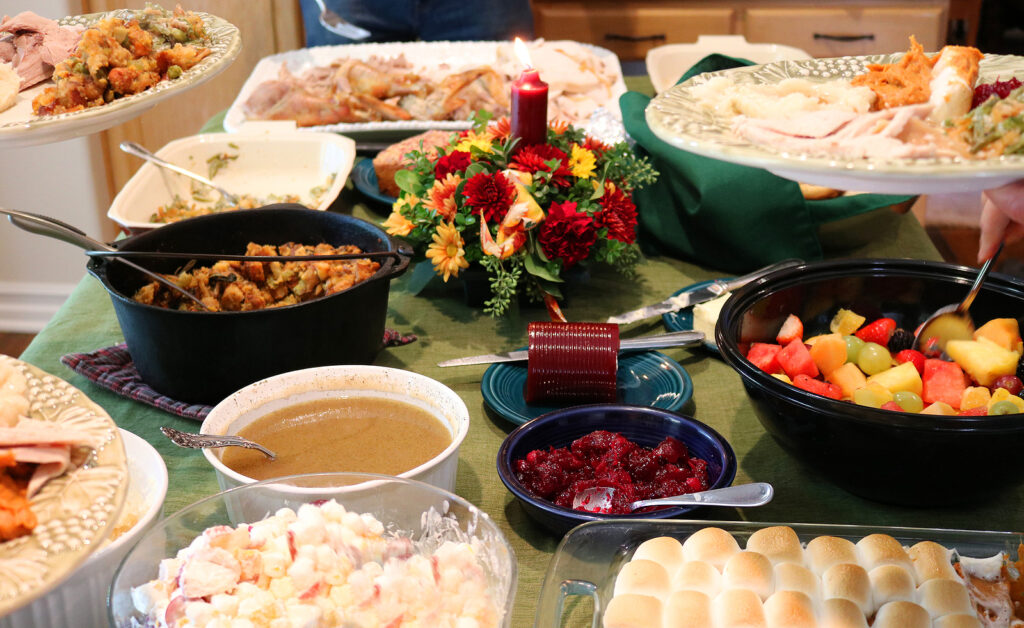When planning a funeral, one aspect that often gets overlooked is what food to serve at the reception. The meal or refreshments shared after a funeral serve as more than just sustenance; they offer comfort and help bring family and friends together during a time of grief. This guide will help you navigate the decisions of what food to serve at a funeral, whether it’s in Canada or the US, and includes considerations for various types of receptions and cultural traditions.
Reception Types and Suggested Food
1. Traditional Funeral Luncheon (Sit-Down Meal)
A sit-down meal is a common way to gather after a formal service. The goal is to provide comfort through familiar, hearty dishes.
- US: Casseroles, baked chicken, sandwiches, and pasta are popular choices. Think comfort food that is easy to serve in large portions.
- Canada: Similar to the US, but with regional flair. In Quebec, you might see meat pies like tourtière or desserts such as butter tarts or Nanaimo bars.
2. Buffet or Potluck Reception
A more informal gathering often includes a buffet or potluck, where family and friends bring dishes.
- US: Finger foods, pasta salads, cold cuts, and casseroles are typical. Potlucks encourage community participation, as guests contribute their favorite dishes.
- Canada: Potluck receptions are also common, especially in rural areas. Popular choices include sandwiches, quiches, and pies. Desserts might include Canadian specialties like butter tarts or fruit pies.
3. Coffee and Cake Reception
For smaller gatherings or more casual services, coffee, tea, and a selection of cakes or cookies are common. This is particularly appropriate after memorial services or at-home gatherings.
- Canada: Alongside cakes or cookies, scones, muffins, or Canadian desserts like Nanaimo bars are often served.
Considerations for Funeral Foods
- Ease of Preparation: Choose food that can be prepared ahead of time and easily transported. Dishes that can be reheated or served cold are ideal.
- Comfort and Familiarity: Stick with comfort foods that guests will recognize and appreciate. Traditional family recipes can offer a special touch.
- Religious and Cultural Traditions: Be mindful of the family’s cultural and religious practices. For example, Jewish funerals often require kosher food, while Muslim funerals will need halal options.
- Time of Day: The time of the reception can guide food choices. Morning services might be followed by brunch (quiche, fruit trays), while evening services might call for heartier dishes like casseroles or pasta.
Traditions by Region and Culture
- US Traditions: Many US regions, especially in the South, have strong traditions around funeral food. You might find dishes like fried chicken, ham, macaroni and cheese, and deviled eggs. See: Funeral food by state
- Canada Traditions: Canadian funeral foods often include regional specialties. In Quebec, it’s common to see meat pies or tarte au sucre, while in the Maritimes, seafood dishes like chowder or fish cakes may be served.
Different cultures also have unique food traditions.
- Irish Wakes: Sandwiches, tea, and whiskey are common, reflecting the wake’s more social nature.
- Italian Funerals: Italian-American gatherings often feature baked pasta dishes like lasagna, served with salad and bread.
- Chinese Funerals: Rice, noodles, and fish are typical, chosen for their symbolic meanings and to provide comfort to the family.
Canada vs. US: Similarities and Differences
- Similarities: Both countries focus on comfort food that is easy to prepare and serve in bulk. Potluck and buffet receptions are popular, allowing guests to contribute.
- Differences: Canadian funerals, especially in regions like Quebec or the Maritimes, may feature more regional dishes influenced by French or British traditions, such as tourtière or fish pies. Meanwhile, religious customs in Canada may be observed in some communities, such as those with large Catholic or Orthodox populations. However, outside of those exceptions, Canada is largely secular.
What Not to Serve at a Funeral
- Messy or Complicated Foods: Avoid dishes that are difficult to serve or eat, such as soups or foods that require special utensils.
- Strong Flavors or Allergens: Skip foods with strong odors, such as garlic-heavy dishes or spicy food. Be mindful of common allergens, like nuts, shellfish, or dairy, as guests may have dietary restrictions.
- Alcohol: While alcohol may be served at some funerals, especially in Irish wakes or other specific cultural practices, it is usually best to avoid it unless the family specifically requests it.
- Perishable Foods: Dishes that spoil quickly or require refrigeration, such as seafood or mayonnaise-based salads, should be avoided unless they can be kept at the correct temperature.
The food served at a funeral is about more than sustenance—it provides comfort and creates a sense of togetherness during a difficult time. Whether you’re in the US or Canada, the goal is to serve food that reflects the family’s traditions, offers comfort to guests, and fits the style of the reception. Simple, familiar, and easy-to-prepare dishes are the key to creating a thoughtful and respectful meal for all who gather to mourn.

